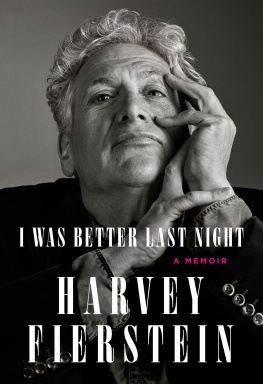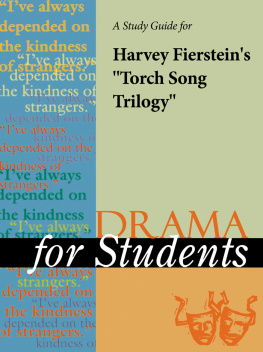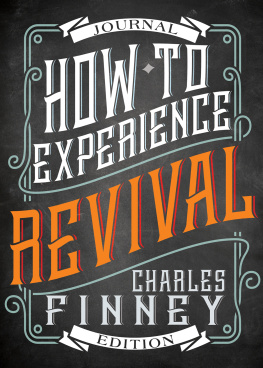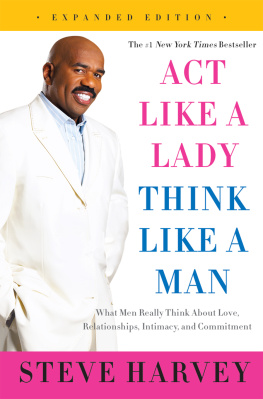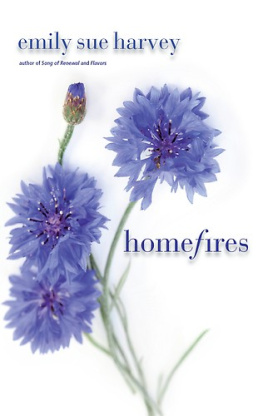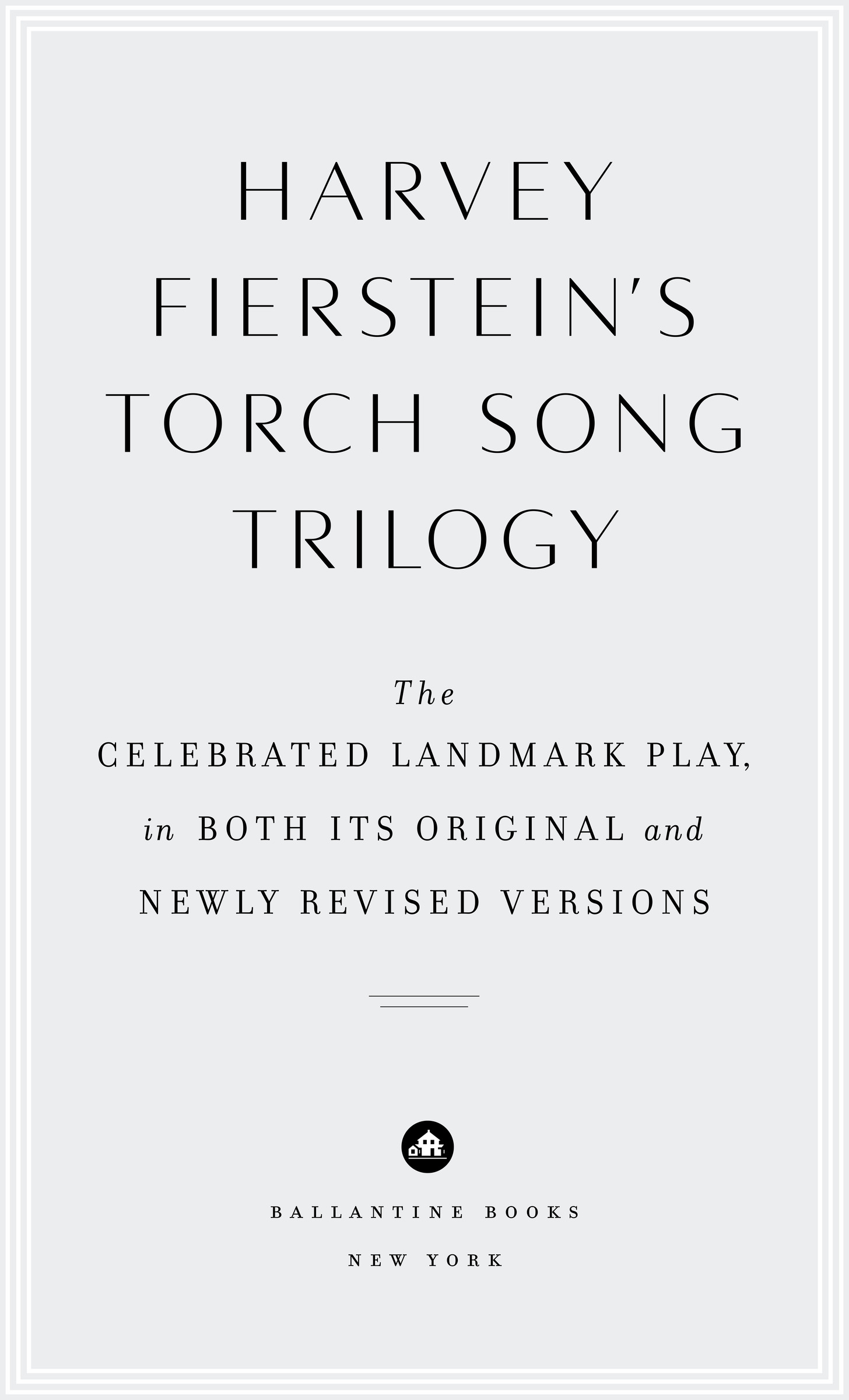All rights reserved.
Published in the United States by Ballantine Books, an imprint of Random House, a division of Penguin Random House LLC, New York.
B ALLANTINE and the H OUSE colophon are registered trademarks of Penguin Random House LLC.
INTRODUCTION
No work is precious. I was raised on that credo since my days in art school, where my professor decreed, Its painting, not painted. Art is a verb.
The three plays of Torch Song Trilogy were written and produced sequentially. I included enough backstory from one to the next so that each could be experienced independently, but in my mind I was telling a single tale.
The International Stud was written and performed at La MaMa E.T.C. in 1978. We moved it to a commercial run at the Players Theatre on MacDougal Street, where it ran a few months and closed.
The following season I wrote Fugue in a Nursery and premiered it at La MaMa E.T.C., as well. A commercial producer transferred it to the Orpheum Theatre on Second Avenue, where it, too, met commercial failure.
While awaiting that transfer I wrote the third part of the trilogy, Widows and Children First! Once again, it premiered at La MaMa, and once again it was optioned by a commercial producer. But when Fugue closed Off-Broadway I soured on the notion that Widows would do any better on its own than the first two had. Thankfully, that production never materialized.
The following June, John Glines was putting together a Gay Play Festival under the auspices of his theater company, The Glines, and asked if I could arrange a one-night event of readings from the trilogy. That was the first time I studied the script as a whole, to choose what scenes were necessary to tell the entire story in a brief presentation. The evening was a great success and proved to me that the plays needed to be seen together. Fortunately, John agreed.
The Richard Allen Center was a small theater in an office building across from Lincoln Center. It was there that Lawrence Lane, producing for The Glines, first presented Torch Song Trilogy. As standalone events, the individual plays were short, each running about ninety minutes, and the characters had leave to indulge themselves. But put together, and including intermissions, the unedited plays would have run an unwieldy five hours. Presenting the trilogy in one evening meant adopting urgency in the telling. Time became as rare a commodity as our Off-Off-Broadway budget.
My art school training rang in my ears: No work is precious. I slashed monologues and gags and chipped away at dialogue. In truth, I had another secret weapon emboldening my red pencil: No matter what kind of mess I made of this adaptation, the plays were already published in whole as a book, unedited and unabridged. They would survive their creators mucking about. Holding that tome in one hand freed the other hand to slash away.
And so, in the autumn of 1979, we presented a four-hour version of the trilogy to our ninety-nine seat audience. Well, that was the running time on nights when the theaters single bathroom, shared by men, women, audience, actors, and house staff, didnt overflow. And the audiences who made the trek up five flights of stairs in an otherwise empty office building loved what we had to offer.
The lure of a commercial production called again. The Actors Playhouse in the West Village would be our home, but to make the venture viable we needed to add matinees to our playing schedule. The producers asked if I could get the show under that four-hour mark so that wed have time to eat and rest between performances on two-show days. But by now the trims were beginning to irk, as the actors had grown fond of their performances and didnt want to give up any lines. I vowed a painful pledge to the other performers: For every line I cut of anothers character, I would cut one of my own. This made no one happy except for the crew, whod get out of work even earlier.
Broadway was our next frontier, and there, rules come with penalties. The curtain had to ring down before 11:00 P.M. or there would be costly overtime due to the house and backstage staff. Even with a 7:30 curtain, which was an unheard-of compromise in those days, I was sent back to chop more from the script. Still, our advertising team told us that we would never attract an audience until we moved to a standard 8:00 P.M. curtain. And one more time my pencil bled red and the actors tears flowed, but I got it done. We achieved an 8:00 start and an 11:00 finish and went on to win the Tony Award as well as the Drama Desk for Best New Play. Torch Song Trilogy eventually ran 1,222 performances on Broadway, and that is the version that has been licensed and performed from 1982 until 2017.
When it came time to write the screenplay for the film of Torch Song Trilogy, I again walked the plank. I sat down at my newfangled Brother Word Processor and typed away, the published script always within reach. Still, the issue was time. Movies speak a different language than theater, but its interesting to note that my contract with New Line Cinema dictated nothing about content, only that the film be no longer than two hours. We delivered the film at exactly the specified lengthplus the movie companys vanity card. So, if they wanted to see their name on screen, the movie ran over two hours. But I met my contractual obligation.
In 2017 my friend Richie Jackson asked permission to mount a new production of Torch Song Trilogy. I considered three possibilities: Present the plays uncut in repertory for the first time. Or revive the award-winning Broadway production just as it was. Or do something new. I am still that art student aiming to please his professor. I adopted and adapted his mantra into Its called writing, not written. And so, here is something new.
As before, I approached the material with the assurance that the original would always exist in print. My assignment was to dust the cobwebs from the plays, to dispense with memory and view the story with new eyes. In all of my fiddling over the years, I have never rewritten; the changes Ive made were achieved solely through editing. I began writing these plays in 1975. I am no longer that person and I wouldnt dare put words in his mouth, and so the red pencil was again the only weapon available to me. Obviously a new production would necessitate a new design, and as long as there was a new design, how about a new name?


